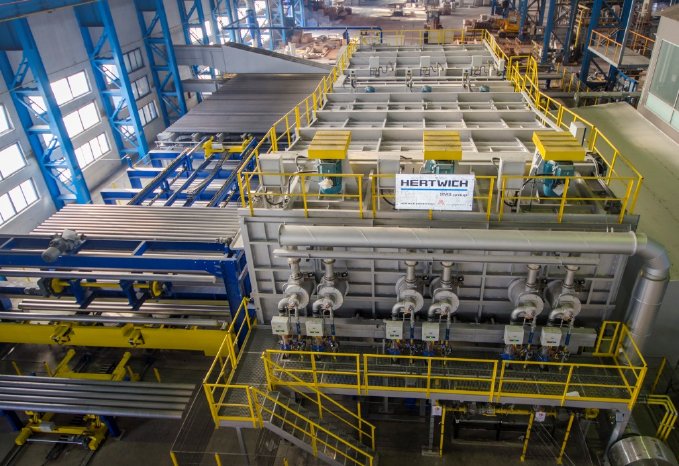The Dĕčín plant is part of the multinational Constellium network and is one of the leading manufacturers of aluminum extrusion products in Europe. The plant is particularly important as an integrated manufacturer and processor of hard and soft alloys as well as a supplier of extruded, partially drawn tubes, bars, seamless and non-seamless profiles. The increasing demand, especially from the automotive industry, has prompted Constellium to expand the Dĕčín plant in several investment stages.
The new homogenizing capacities are part of the current programme, which is aimed at expanding extrusion capacity. For this purpose, a further extrusion plant including a casthouse is planned, for which Hertwich will supply the entire heat treatment in the form of a continuous homogenizing furnace.
The concept of continuous homogenization, first introduced by Hertwich in 1980, has now established itself with a share of about two thirds of the worldwide market for billet production. Particularly advantageous are the suitability of the process for automation and, above all, the uniform heating over the entire billet volume.
The continuous homogenizing operation starts by placing the billets, lifted out of the casting pit, onto the log entry table in front of the furnace. The billets arranged next to each other pass the heating zone and the holding zone and are then transferred into the cooling station. The new furnace has a capacity of nine tons of aluminum billets per hour in the diameter range between 250 and 385 millimeters with billet lengths of 4 to 7.5 meters. As a special feature, the cooling station comes with an intensive noise insulation that drastically reduces the noise level.
The cooled billets are inspected by an ultrasonic testing station. In accordance with the high quality standard, a helical testing station is used at this point, in which two probes positioned in relation to each other are moved along the rotating log in axial direction. The control system stores any detected defects and removes them during the subsequent sawing process.
The inspected billets are transferred to the sawing station via automated conveyors, where head and butt ends are cut off and logs are divided into ready-to-use billets based on the specifications. Both, short billets (500 up to max. 1,600 millimeters) or long billets (3,000 millimeters up to max. 7,200 millimeters) can be produced. The
strapping station downstream the saw can bundle both short and long billets.


